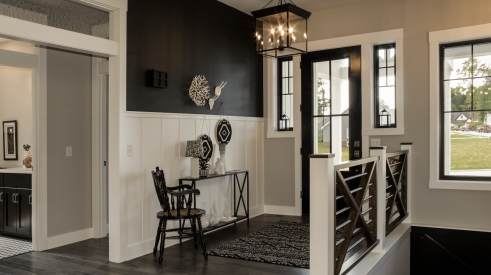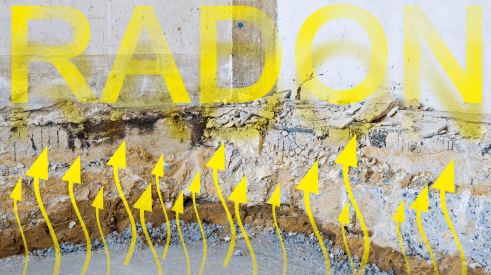The range hood is perhaps the least recognized kitchen appliance, yet by ventilating contaminated air out of the house, it does more to protect the health of occupants than any other. But until now, there has been no way to know just how well these appliances do that job.
Seeking Solutions for Indoor Air Quality
At the Department of Energy, we knew we could help improve indoor air quality (IAQ) and health in energy-efficient homes by targeting the primary sources of contaminants, then working with the industry to develop smart, affordable solutions.
In 2015, as part of its Research-to-Market program, Building America launched a comprehensive strategy to develop a quiet, energy-efficient range hood that could be rated on its effectiveness at removing air pollutants from the kitchen.
Partners included DOE’s Lawrence Berkeley National Laboratory (Berkeley Lab), manufacturer Broan-NuTone, and Newport Partners, a technical and market research firm with expertise in home ventilation equipment. The team also worked closely with industry standards organizations, ASTM International and the Home Ventilating Institute (HVI).
RELATED
- For Better Indoor Air Quality: Build Tight and Ventilate Right
- Breathe Easier—Healthy Homes Go Mainstream: How to deliver and sell next-level IAQ
- Why Bringing Fresh Air Into a House Is a Big Deal
Building America took the lead to identify the need, support research, help the industry develop voluntary standards, and work with manufacturers to implement an innovative, affordable solution.
The result: In 2022, Broan-NuTone, the largest U.S. manufacturer of residential range hoods, will begin producing the first commercially available “smart” range hood. This quiet, energy-efficient appliance is programmed with pollutant-monitoring sensors. The fan automatically turns on when cooking activity is detected and switches off once pollutants have returned to acceptable levels. A variable-speed fan adjusts the unit’s airflow rate with cooking activity.
The range hood also will be rated using a new standard for “capture efficiency,” which Building America helped develop, setting the stage for other manufacturers to follow, ultimately making all kitchens healthier and more efficient.
Indoor Air Quality Challenges in the Kitchen
Cooking is one of the biggest sources of indoor air pollution in homes. Gas burners produce small amounts of carbon monoxide and nitrogen dioxide, which can aggravate asthma and other respiratory conditions. In addition, cooking, whether on gas or electric burners, produces fine particles and volatile organic compounds (VOCs), some of which can penetrate and damage human lungs over time. In general, frying, broiling, and cooking at high temperatures produces the most pollutants of concern.
Range hoods are supposed to address this health issue by venting fumes out of the kitchen. However, as Berkeley Lab research confirmed, many people do not use their range hoods (see tables, below). Some don’t like the noise or forget to turn them on, and many think the fans are only needed when cooking generates noticeable steam, smoke, or odors.
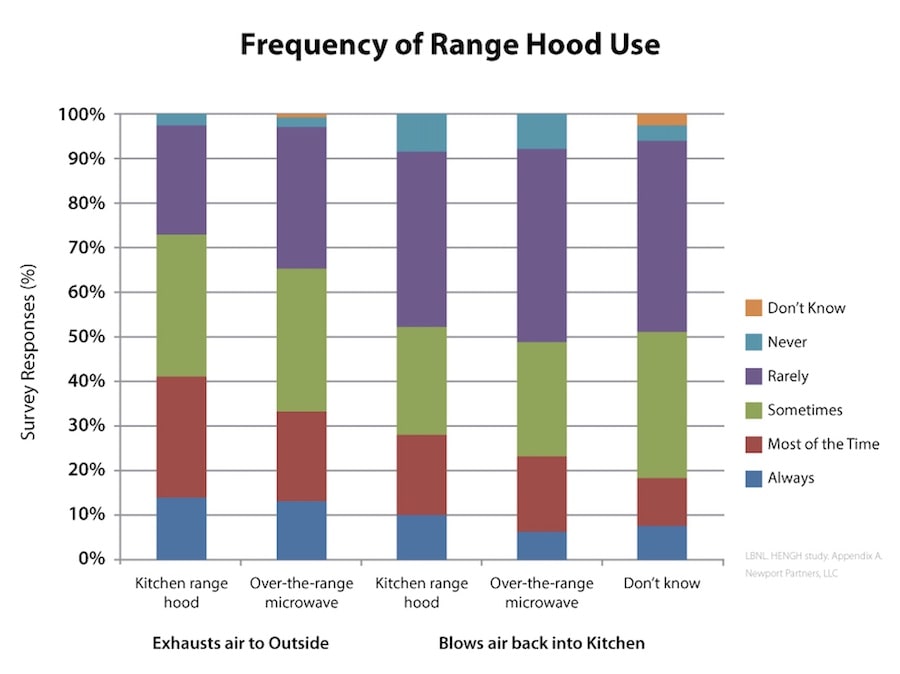
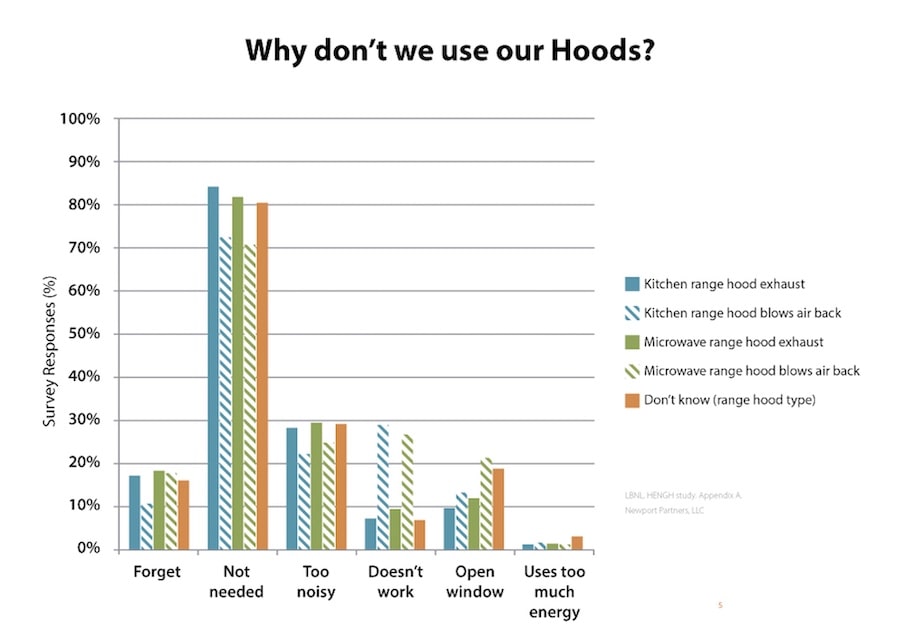
Today’s range hoods also have design and performance issues. Many do not effectively capture and remove kitchen pollutants or they recirculate air without ventilating to the outside. And, of course, some homes don’t have range hoods at all.
From Airflow to Capture Efficiency
Even if people use their range hoods consistently (and until now, there has been no way to determine if the appliances are actually doing their job), Standard 62.2, Ventilation and Acceptable Indoor Air Quality in Residential Buildings, published by ASHRAE, sets requirements for both noise and airflow, measured in cubic feet per minute (cfm).
Even so, the standards don’t say anything about how effective or efficient range hoods need to be.
A range hood’s ventilation rate, expressed in cubic feet per minute (cfm), has been a proxy for how effectively a given fan will ventilate a kitchen—the higher the cfm, the more polluted air is removed, at least in theory. “But when we started doing field and lab testing of kitchen range hoods, we found that their performance was all over the place,” says Dr. Iain Walker, a scientist at Berkeley Lab.
Walker’s team determined that simply specifying an airflow rate is not good enough, and ASHRAE’s minimum standard for cfm is likely too low.“We wanted to come up with a metric that was more about what we actually care about, which is removing contaminants,” he explains.
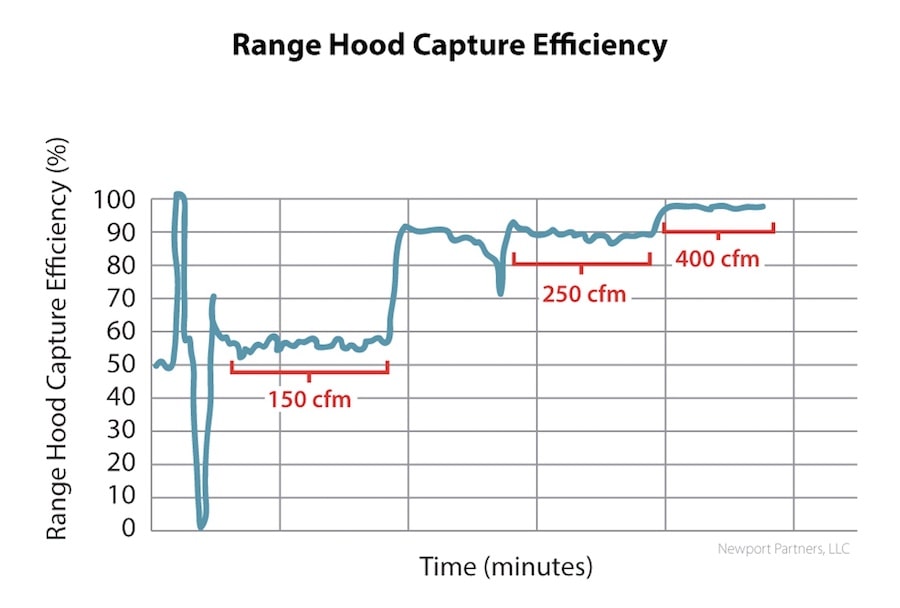
This shift in focus away from cfm led to the development of an ASTM standard test method for measuring capture efficiency (CE), which is defined as the percentage of pollutants that are removed from the air. Berkeley Lab built a test chamber to develop the new standard, which is called ASTM E3087-18, Standard Test Method for Measuring the Capture Efficiency of Domestic Range Hoods. The test uses carbon dioxide as a “tracer gas” to track how well the range hood removes pollutants.
The test method doesn’t set targets for CE; it simply describes a standardized procedure that manufacturers can use to evaluate their products. CE will be included in directories published by HVI and the Association for Home Appliance Manufacturers, and Walker expects minimum CE will eventually be specified in ASHRAE 62.2.
Right now, adherence to capture-efficiency standards is voluntary, although minimum CE requirements are being adopted in some building codes, including California’s Title 24. The standards process is slow enough that manufacturers should have enough time to prepare, Walker says, adding, “There will be a transition period of one code cycle where you can either comply with minimum airflow or minimum CE.”
DOE also is working with manufacturers and industry standards organizations to help institute the standards so manufacturers can effectively implement better performance and get credit for it in the marketplace.
Developing the First 'Smart' Range Hood for a Healthier Home
Armed with Berkeley Lab’s research on range hood use and effectiveness, Newport Partners worked with appliance manufacturer Broan-NuTone to develop a “smart” range hood that is quiet, efficient, and effective—and that won’t require human interaction or initiative to operate.
“The goal was to develop and demonstrate the use of a smart range hood product in kitchens that automatically detects and responds to pollutants,” says Sam Bowles, consultant for Newport Partners.
Before taking Broan-NuTone’s smart range hood into the field, Berkeley Lab performed lab testing and reviewed test plans. The lab studies tested the prototype using a wide range of variables, including the type of cooktop (gas or electric), the type of “cooking event,” the location of the burner being used, and the distance of the range hood from the cooktop.
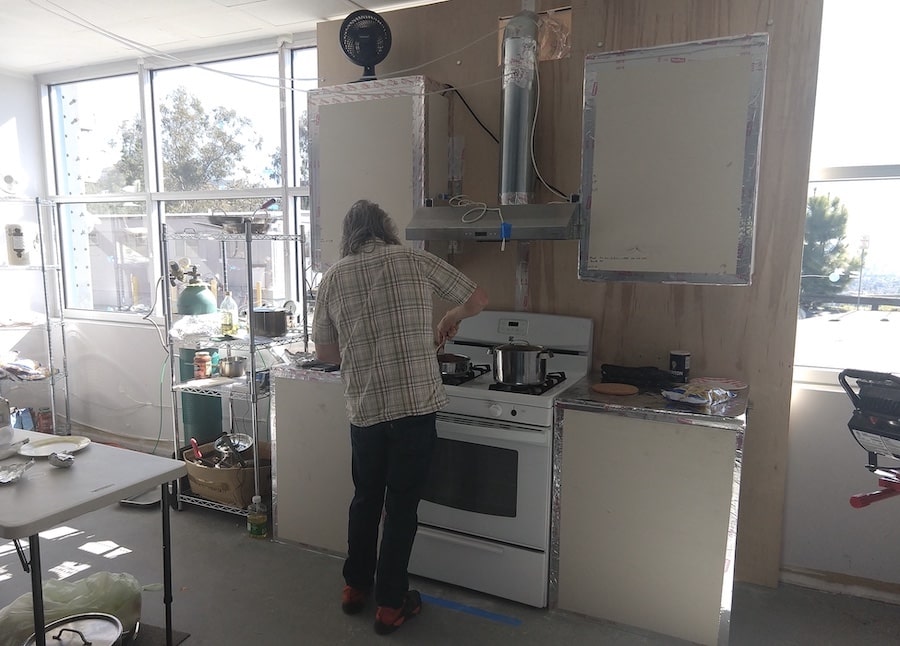
The prototype smart range hood was evaluated for CE and how well it reduces concentrations of three pollutants: nitrogen dioxide (NO2), fine particulate matter, and particle number (PN).
In testing, the fan was not only effective at removing pollutants, it also was extremely quiet, operating at between 0.3 sones and 0.6 sones when flow rates ranged between 150 cfm to 160 cfm, and 5 sones to 6 sones at full speed. (By comparison, just 3%of range hoods listed in the HVI-Certified Products Directory achieve ratings of less than 1 sone.)
For the field research, Newport installed smart range hoods in two new homes built in Maryland and another one in New York; all three were built to “tight home” standards to limit incidental airflow through the thermal shell. Newport Partners also wanted to engage homeowners “who cook frequently but don’t use their range hoods,” Bowles says.
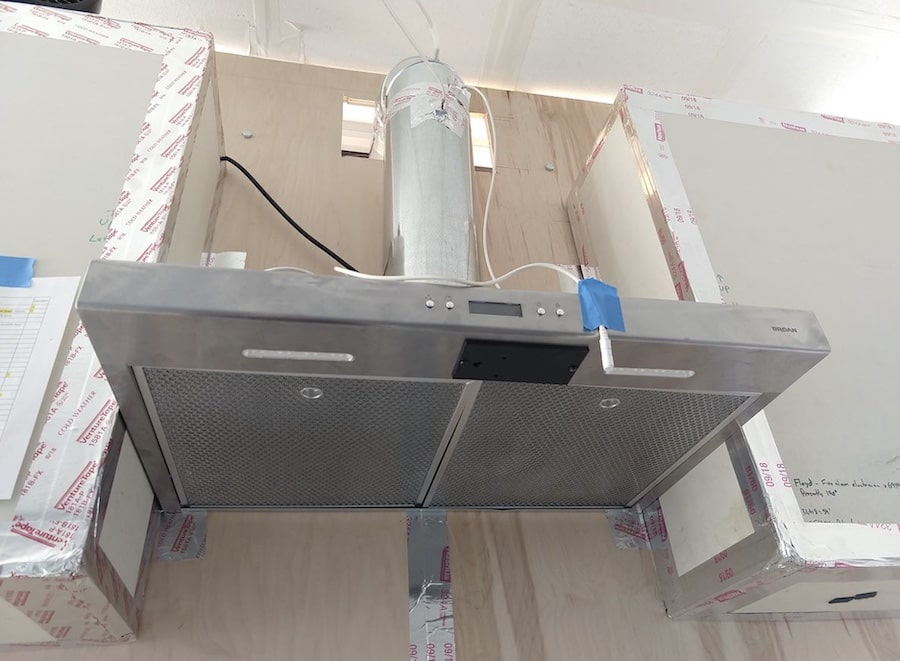
To obtain a baseline, the homes were monitored before the smart range hoods were installed. IAQ sensors were installed and data collected for two weeks. During this time, the homeowners were instructed to cook and use their existing range hoods as they normally would and to keep a log of their “cooking events.”
The existing range hoods were then replaced with the new smart range hoods with ducting that vents the exhaust to the outside. The sensors were reset and two more weeks of data was collected.
Smart Range Hoods: the Verdict
“The smart range hood works,” Bowles says. The units responded to all but one of the cooking events (a 94% response rate), and took less than 1 minute to respond.
During the field study, a typical cooking event lasted 10 to 15 minutes, and the smart range hood ran an average of 25 minutes before switching off. NO2 levels were reduced by 40% compared with the conventional range hoods. The frequency of “extreme NO2 events” was also reduced.
Broan-NuTone and Newport Partners have spent many hours studying and tweaking the smart range hood to ensure it responds reliably in every imaginable situation. They also updated the firmware to prevent the range hood from responding to false cues, such as sunlight.
The manufacturer is striving for a design that can be integrated into a broad scope (different range hood configurations and price points) of range hood products. The product will go to market in 2022, solving an important problem for modern homes at the perfect time for an appliance that makes a home healthier.
RELATED
About Building America’s Research-to-Market Plan
The U.S. Department of Energy (DOE) Building America Program has spurred innovation in building efficiency, durability, and affordability for more than 25 years. Elevating a clean-energy economy and skilled workforce, this world-class research program partners with industry to leverage cutting-edge science and deployment opportunities to reduce home energy use and help mitigate climate change.
The Building America Research-to-Market Plan identified three integrated road maps:
- High-performance, moisture-managed envelope systems
- Optimal comfort systems
- Optimal ventilation systems and indoor air quality (IAQ) solutions.
Each of these road maps is designed to strategically tackle the integrated challenges related to achieving wide adoption of energy-efficient and healthy high-performance homes.
Eric Werling is national director of the Building America program for the U.S. Department of Energy. He is an expert in residential energy efficiency, indoor air quality, and building sciences and is focused on reaching zero carbon emissions in the next decade.
Advertisement
Related Stories
Indoor Air Quality
Mechanical Ventilation in Homes Works—If You Use It
Building America field studies show a disconnect between intended and actual use of mechanical ventilation systems in newer homes
Indoor Air Quality
Wellness Begins with the Air You Breathe
ActivePure® Technology is a patented, proactive air purification technology that cleans indoor air faster and more effectively than…
Quality Matters
How to Build Healthy Homes That Protect Homebuyers From Radon
Consider a relatively simple and inexpensive passive mitigation system to vent radon—a radioactive, odorless, invisible gas—and deliver a truly healthy home



